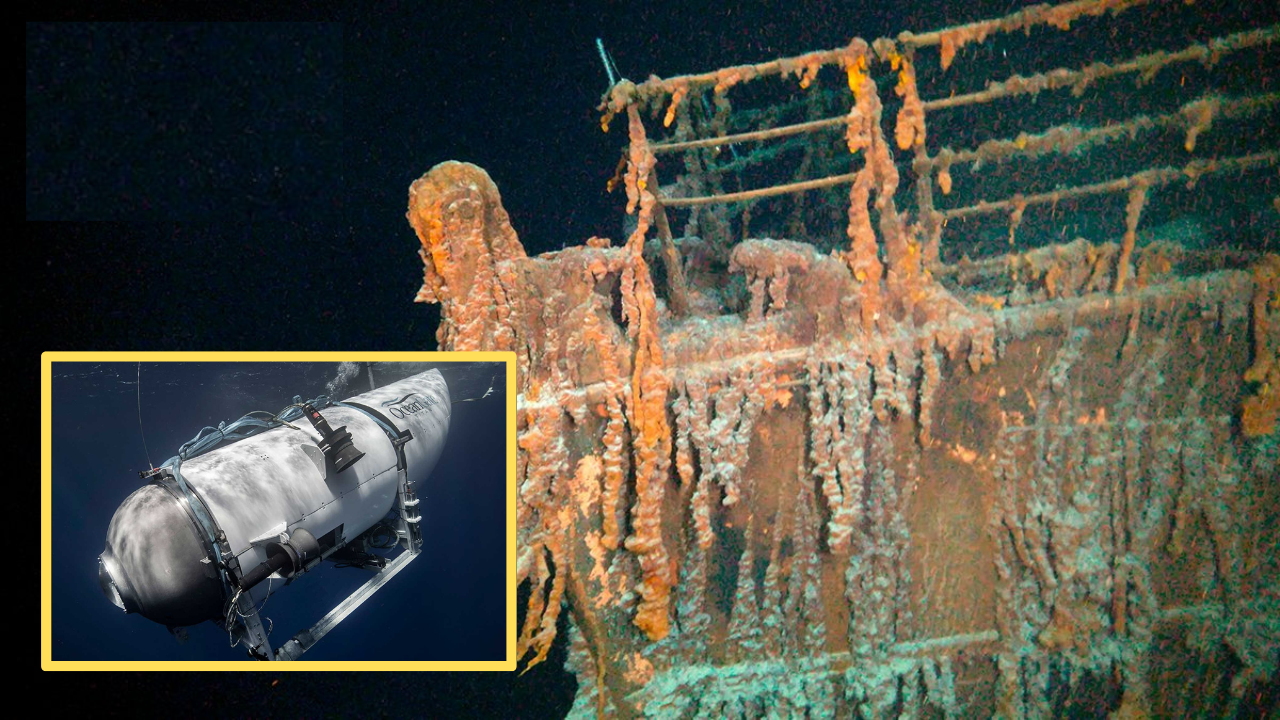










A tourist submarine that was built to explore the Titanic’s historic wreckage has vanished. Authorities and specialists are working to find the submersible and its occupants as a result of the vessel’s disappearance. The incident highlights the inherent dangers involved in deep-sea exploration and serves as a reminder of the Titanic’s enduring appeal as the world holds its breath.
To give tourists a once-in-a-lifetime chance to see the eerie wreckage of the fabled Titanic, the unfortunate submarine set out on its journey to the bottom of the North Atlantic Ocean. The ship, which is infamous for sinking on its first voyage in 1912, is still submerged about 12,500 feet below the surface of the ocean.
Since its discovery in 1985, tales of the Titanic’s opulence, the catastrophic iceberg collision, and the death of more than 1,500 people have captivated people all over the world.
The tourist submersible departed from its base on a routine expedition with a crew of skilled divers and several enthusiastic passengers.
The ship appeared ready for the journey because it was outfitted with cutting-edge technology and was made to withstand the intense pressure of the deep sea. As time passed, though, contact with the submarine abruptly ceased, leaving authorities and family members frantically searching for any sign of their whereabouts. An international search and rescue operation was launched as soon as word of the disappearance spread
In order to search the vast underwater terrain for the missing submersible, government agencies, maritime specialists, and specialised teams mobilised their coordinated efforts. Deep-sea diving teams, sonar systems, and remotely operated vehicles (ROVs) are all used in the operation to search the ocean floor for any signs of the ship. There are many obstacles in the way of finding the missing submarine.
The search teams face significant obstacles because of the North Atlantic’s extreme depths and dangerous underwater conditions. The mission is made more difficult by the wide-open ocean floor, poor visibility, and potential debris. The need to get the crew and passengers to safety, however, has not dimmed the determination to find the missing submarine.
Strict safety precautions and adherence to established regulations are necessary for deep-sea exploration, particularly in delicate underwater environments like the Titanic wreck site. Such expeditions must be preceded by in-depth risk analyses, reliable emergency plans, and meticulous equipment inspections. The safety of everyone involved depends on regular communication channels and backup plans.
The loss of the tourist submarine serves as a sobering reminder of the dangers and difficulties that come with deep-sea exploration. Despite the fact that technological advancements have increased accessibility for underwater exploration, not all risks can be completely eliminated. This occurrence highlights the importance of ongoing investigation, invention, and safety measures to protect the lives of those taking part in underwater activities.
The Titanic disaster continues to be a tragic chapter in human history that has captured the public’s attention for more than a century. People all over the world are still enthralled by its tales of bravery, tragedy, and the unflinching spirit of human endeavour. The ongoing investigation of the Titanic’s wreckage honours those who perished and serves as a reminder of both the vulnerability and resiliency of human existence.
The world waits in anticipation for good news as the search for the missing tourist submarine continues. The incident serves as a reminder of the risks involved in deep-sea exploration and the significance of strict safety procedures.









